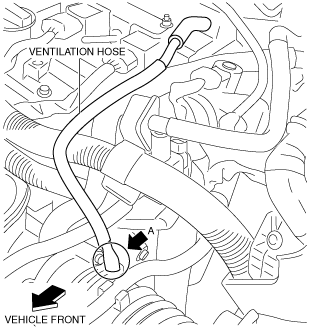 |
POSITIVE CRANKCASE VENTILATION (PCV) VALVE INSPECTION [SKYACTIV-G 2.0]
id0116z8800400
Airflow Inspection
1. Disconnect the section (A) of ventilation hose shown in the figure.
am3zzw00012522
|
2. Start the engine and verify that vacuum is applied to the end of the disconnected ventilation hose while the engine is idling.
3. Remove the battery cover. (See BATTERY REMOVAL/INSTALLATION [SKYACTIV-G 2.0].)
4. Disconnect the negative battery cable. (See BATTERY REMOVAL/INSTALLATION [SKYACTIV-G 2.0].)
5. Remove the intake manifold. (See INTAKE-AIR SYSTEM REMOVAL/INSTALLATION [SKYACTIV-G 2.0].)
6. Remove the PCV valve and the oil separator as a single unit. (See POSITIVE CRANKCASE VENTILATION (PCV) VALVE REMOVAL/INSTALLATION [SKYACTIV-G 2.0].)
7. Verify that there is no airflow when pressure is applied to port B.
am3uuw00007298
|
8. Verify that there is airflow when vacuum is applied to port B.